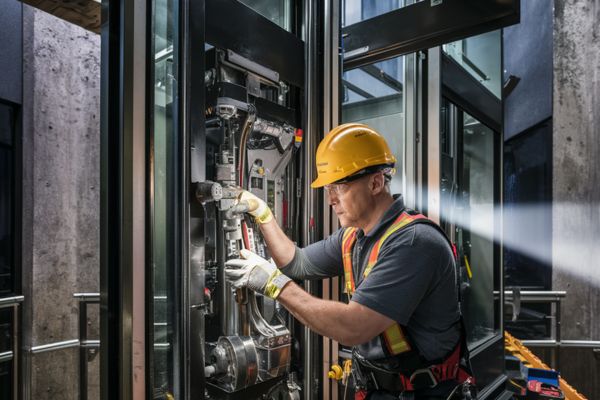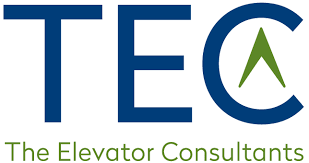Elevators are an essential part of buildings, ensuring the smooth and efficient movement of people and goods between floors in hospitals, hotels, residential, offices, retail, campuses, and other facilities with elevators and escalators. However, as with any mechanical system, elevators are subject to wear and tear, a life cycle, and their components can become obsolete over time. The concept of elevator parts obsolescence is at the forefront in the elevator industry today, its impact on building owners and managers, and potential solutions to address this issue are discussed.
What is Elevator Parts Obsolescence?
Elevator parts obsolescence occurs when manufacturers no longer produce certain components of an elevator system or when these parts become difficult to source in the market. This can happen for various reasons, such as manufacturing issues, mergers, original equipment manufacturer business strategy, technological advancements, or the discontinuation of a particular product line by the manufacturer.
The Challenges of Obsolescence
Obsolete elevator parts create significant challenges for building owners and managers. When a component fails or requires replacement, sourcing a suitable part often proves difficult, time-consuming, and costly. In some cases, building owners must modernize or replace the entire elevator system, resulting in substantial expenses and potential disruptions to operations.
Moreover, obsolete parts can compromise the safety and reliability of the elevator system. As components age and wear out, they may not function as intended, increasing the risk of breakdowns, entrapments, and accidents.
Proactive Approaches to Mitigate Obsolescence
To mitigate the risks associated with elevator parts obsolescence, building owners and managers can adopt several proactive strategies:
- Be in the know: It is common for building owners and managers to not know when an elevator part is obsolete until it is obsolete.
A professional elevator consultant understands which parts may be targeted for replacement or are becoming obsolete.
- Regular Maintenance: Implementing a comprehensive maintenance program can help extend the life of elevator components and identify potential issues before they escalate. This includes regular inspections, cleaning, lubrication, and adjustment of critical parts.
- Modernization Planning: Developing a long-term modernization plan can help anticipate and address obsolescence issues. This involves assessing the current condition of the elevator system, identifying components that are nearing the end of their useful life, and budgeting for timely upgrades or replacements. In the industry, the life cycle of elevators is becoming shorter in some applications, putting a financial burden on buildings.
- Inventory Management: Maintaining an inventory of critical spare parts can help minimize downtime in the event of a breakdown. Building managers should work closely with an elevator consultant to ensure the elevator maintenance providers stock essential components that may become obsolete.
- Repair: Building owners and managers often seek ways to repair or refurbish elevator parts, which can be a viable solution in some cases. An elevator consultant can leverage nationwide knowledge to identify where parts can be repaired, rebuilt, or refurbished.
The Role of An Elevator Consultant
A consultant plays a crucial role in helping building owners navigate the challenges of parts obsolescence. These professionals have the expertise and resources to identify potential obsolescence issues, recommend appropriate solutions, and implement a plan for necessary repairs or upgrades. An elevator service provider will notify the building when the parts are obsolete, then provide a proposal for the new part. Buildings are usually not prepared financially for this unexpected cost.
A consultant can help building owners understand the steps in trying to determine if the part is truly obsolete and if it is obsolete, are there other options? An elevator consultant will have a network of suppliers and manufacturers to potentially source compatible replacement components and offer customized solutions to address obsolescence issues.
Elevator parts obsolescence is a critical issue that building owners and managers must address proactively. By implementing regular maintenance, planning for modernization, managing inventory, fostering relationships, and embracing resourcefulness, building owners can mitigate the risks associated with obsolete components. Collaborating with experienced elevator professionals is essential to ensure the safety, reliability, and longevity of elevator systems in the face of obsolescence challenges.

Read more related articles:
- WHAT IS ELEVATOR MANAGEMENT SERVICES
- COMMON ELEVATOR PROBLEMS AND HOW TO ADDRESS THEM
- WHY YOU SHOULD CONSULT AN ELEVATOR EXPERT BEFORE REPAIR
Have a Question About Elevators?
Talk to a Professional Elevator Consultant
FAQ for Guidelines for Elevator Replacement Parts
How can I tell if my elevator has obsolete parts?
Typically, your elevator maintenance service provider identifies components that the manufacturer no longer supports, and a consultant can point them out during an elevator assessment.
What should I do if a critical elevator component becomes obsolete?
Work with your elevator maintenance provider to explore potential solutions, such as sourcing compatible replacement parts or upgrading to newer components. If you are not satisfied with the information you receive, an elevator consulting firm can provide all the data you need to make an informed decision.
How often should I modernize my elevator system to avoid obsolescence issues?
The frequency of modernization depends on factors such as the age of the system, the level of usage, and the availability of replacement parts. Premature modernizations are being seen in the industry. An elevator consultant can assist you in options. A building needs to understand that just because a part is obsolete, they do have other options.
Can I stock up on spare parts to avoid obsolescence issues?
While maintaining an inventory of critical spare parts can be helpful, as long as you are stocking the right components and in the appropriate quantities.
How can I budget for the costs associated with addressing obsolescence issues?
No one knows exactly when something will become obsolete. Incorporate general parts replacement costs into both your operating expense and long-term capital planning. Work with your elevator consultant to develop a plan and budget that accounts for potential obsolescence issues and allocates funds for timely upgrades and repairs.

